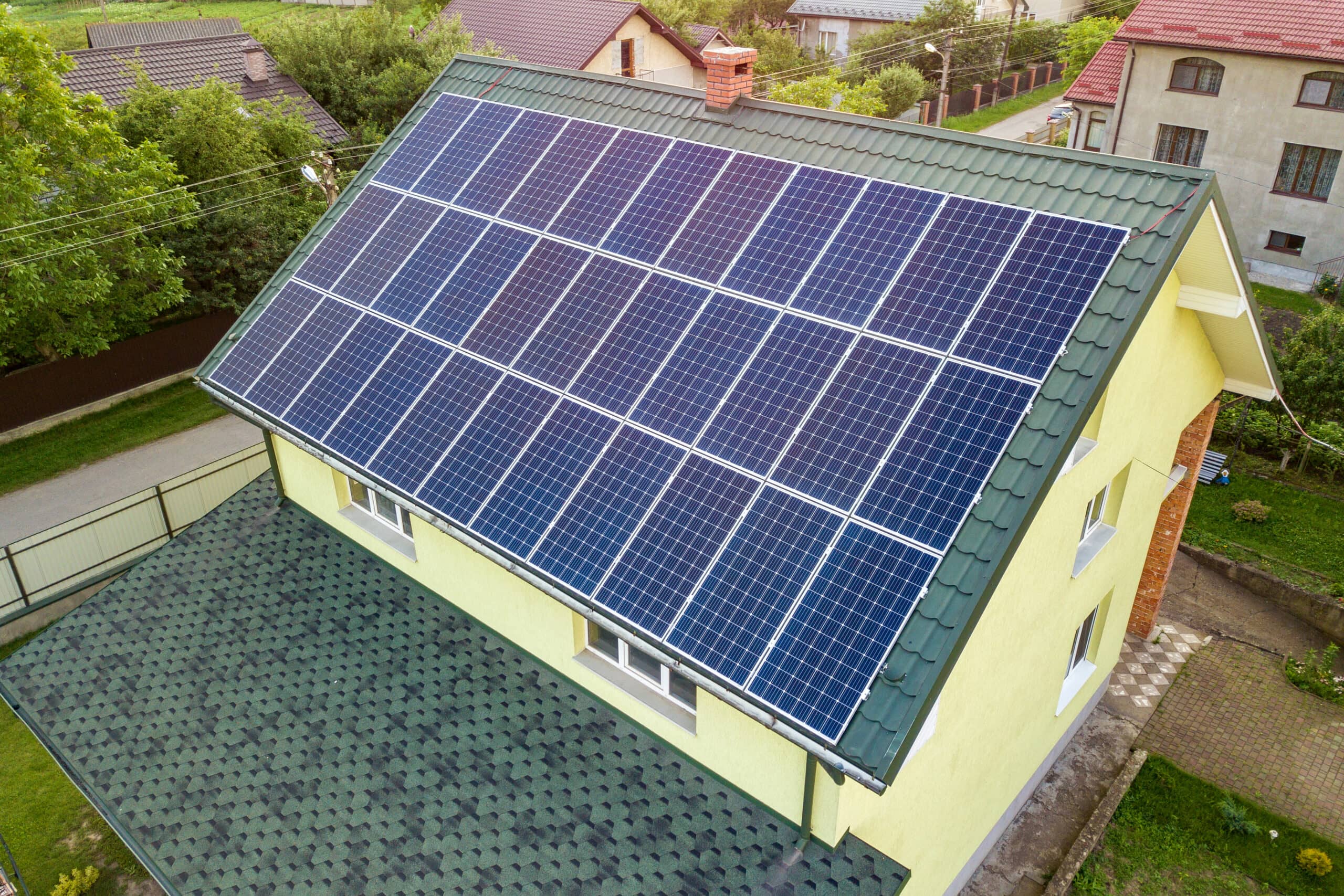Are you interested in making your home a self-sufficient energy-producing hub while saving money on your utility bill? Well, in Canada, ‘Net Metering’ is the answer! It is a revolutionary concept that we are going to explore today.. On this journey, we will delve into the practicalities of net metering, where solar panels meet savings and the Canadian charm. Buckle up, and let us explore the sunny side of residential energy with net metering!
What Is Solar Net Metering?
Solar net metering empowers homeowners with solar panels to generate electricity and seamlessly feed surplus energy into the grid. Here is how it operates: when your solar panels produce more electricity than your home needs, the excess energy is sent back to the grid. In return, you receive credits on your utility bill for the energy you contribute. You can actively apply these credits to cover energy consumption from the grid during periods when solar panels generate insufficient power, such as at night or on cloudy days. It is a fantastic way to make your home more sustainable, save money on your energy bills, and contribute to a greener future!
How Does Solar Net Metering Work?
Solar net metering allows homeowners with solar panels to generate their electricity. When your solar panels produce electricity that flows into your home’s electrical panel, this energy prioritizes powering whatever you need, such as appliances and lights. Imagine your panels generate 10 kWh on a sunny day. If your home uses all 10 kWh, it never reaches the utility meter, so your bill won’t reflect that specific production. This is why your bill doesn’t directly show your system’s output.
However, if your home uses 6kWh, the excess electricity flows back to the grid through your bi-directional meter. Think of it like a two-way street. This excess (like the remaining 4 kWh in our example) gets credited to your account, reducing your future electricity bill.
Benefits of Home Net Metering
Think of the grid as your giant, free battery. Unlike traditional home solar batteries, which cost $15,000 to $150,000 and require constant maintenance, net metering utilizes the existing infrastructure. This eliminates the need for lifestyle changes or expensive batteries. With net metering, if your solar panels aren’t producing enough power, you draw from the grid – seamlessly and without interrupting your routine. It’s a win-win for convenience and cost savings. Here are some other benefits of net metering:
Cost Savings: Net metering allows you to offset your energy consumption with the excess energy you generate, resulting in lower electricity bills.
Environmental Impact: By using renewable energy sources like solar power, net metering reduces reliance on fossil fuels, decreases greenhouse gas emissions, and helps combat climate change.
Return On Investment:Solar panels with net metering are a wise long-term investment. They can boost your home’s value and pay you back over time. Net metering is critical here because it eliminates the extra cost of batteries to store excess solar energy. You use the grid for storage instead.
Community Contribution: By contributing excess energy back to the grid, you are helping to supply clean energy to your community, promoting a greener and more sustainable future for all.
These are just a few of the many benefits of net metering. It is an exciting way to embrace renewable energy, save money, and positively impact the environment.
Types of Solar Net Metering Agreements
In the world of solar net metering, different agreements shape how consumers engage with and gain from this groundbreaking program. Let us explore the three solar net metering agreements, each presenting distinct opportunities and setups for users to leverage solar power and earn credits.
Virtual Net Metering allows multiple customers to benefit from a single solar installation, where the excess energy generated is credited to their utility bills.
Aggregate Net Metering is similar, but it involves a group of customers who collectively own or subscribe to a shared solar project and receive credits for their portion of the energy generated.
Remote Net Metering enables customers who cannot install solar panels on their property to benefit from a remote solar installation, receiving credits for the energy generated at the remote site.
These types of net metering agreements provide flexibility and accessibility, allowing more people to enjoy the benefits of solar energy.
Does My Province Offer Net Metering?
All Canadian provinces and territories provide a net metering scheme. The program allows those who generate electricity using renewable energy to feed their surplus power into the grid. In return, they receive credits that can be applied toward their energy bills. Here is a list of various net metering services/programs available in Canada’s different regions:
Alberta
Alberta introduced net metering in 2017 to encourage the growth of distributed generation. Customers can generate electricity from renewables, such as solar energy or wind, and feed it into the grid to earn credits. The program entitles customers to a credit valued at the same rate they are charged for their electricity supply.
British Columbia
Net metering is also available in British Columbia, allowing residents and businesses to generate power. Under the British Columbia Hydro and Power Authority Net Metering Program, eligible customers can produce electricity using renewable resources and receive credit at their retail rate for any excess electricity they generate and contribute to the grid.
Manitoba
The Manitoba Hydro has an optional net metering program allowing residential and commercial customers to produce electricity. Any excess electricity generated is fed back into the utility grid and is credited to the customer’s account at a retail rate.
New Brunswick
The province of New Brunswick offers net metering through the NB Power’s Customer-Generator Interconnection. The program allows customers to generate electricity, receive excess energy credits, and feed back into the grid at retail prices.
Nova Scotia
Nova Scotia has a net metering program that covers residential, commercial, and institutional customers to produce electricity using renewable energy systems and feeds surplus energy back into the grid. However, the credit system varies among different utility companies.
Northwest Territories
In the Northwest Territories, the Power Purchase Agreement (PPA) program allows customers who generate their electricity through renewable energy sources like solar and wind to sell any excess power back to the grid. However, this program is only available to customers who generate less than 25 kW.
Ontario
Ontario’s net metering program allows customers to generate their electricity using renewable sources such as wind and solar energy. The program allows excess energy to be sent back to the grid at a rate equivalent to the customer’s retail price.
Prince Edward Island
Prince Edward Island’s net metering program allows eligible customers to generate electricity from renewable sources and feed excess energy back into the grid for a credit at retail rates.
Quebec
Quebec’s net metering program allows homeowners to produce electricity from renewables and receive credits for the excess energy fed back into the electricity grid. The rate is equivalent to the retail rate of the electricity supplier.
Saskatchewan
Net metering is available to customers in Saskatchewan that generate their electricity using solar, wind, or other renewable resources. Under the program, the utility company provides customers with a credit at the customer’s retail rate for surplus energy supplied to the electricity grid.
Nunavut
Currently, there is no net metering program in Nunavut.
Yukon
The Yukon has a net metering program allows residential and commercial customers to generate their electricity from renewables and feed surplus energy back into the grid. Utilities purchase excess power from customers at retail prices under the program.
Canada’s various provinces have net metering services/programs promoting sustainable and green energy growth. These initiatives provide renewable energy incentives in different ways and help reduce carbon emissions while promoting energy independence.
Embracing net metering in Canada offers a dynamic pathway to transform homes into sustainable, energy-producing havens. With benefits ranging from substantial cost savings to environmental stewardship, it is more than a technological choice; it is a conscious step towards a greener future. Dive into the sunny side of residential energy, explore the possibilities of net metering, and join the movement towards a brighter, more sustainable tomorrow. However, be sure to look into your province’s net metering program first, and remember that you should always ensure your electric company approves your system before making any purchases or installations. Your home can be a beacon of clean energy and a contributor to positive change. Start today and power up for a sun-filled, eco-friendly future!






